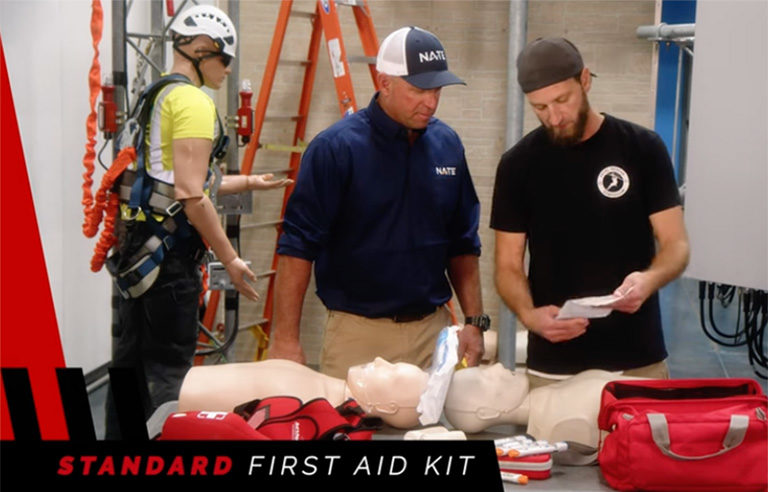
Photo: NATE: The Communications Infrastructure Contractors Association
Watertown, SD — Not all first aid kids are created equal, communication tower industry expert Brandon Foster emphasizes in a new video from NATE: The Communications Infrastructure Contractors Association.
Foster, director of safety and field operations at NATE member company VIKOR, addresses best practices related to first aid with host Sean Gilhooley.
Referencing the diverse range of job tasks while working at height, Foster explains that basic first aid kit supplies are “not adequate” for potential health emergencies that require immediate medical treatment. Those events may include:
- Airway obstruction/breathing issues
- Anaphylactic shock
- Diabetic emergencies
- Sudden illnesses
- Severe bleeding
“You need to explore the scenarios that you’re going to put your workers into,” Foster says. “Then you need to go look at the kits and figure out what the right one is to make sure that they have the tools to come home safely.”
For example, Foster recommends the use of Class B, Type III kits under the American National Standards Institute/International Safety Equipment Association standard Z308.1, which OSHA cites as a recommended, nonmandatory source of guidance for minimum first aid kit requirements. More often, these kits are designed to treat injuries found in workplaces with complex and/or high-risk environments, and are portable, mountable and have a water-resistant seal.
The video advises workers to call 911 in case of a medical emergency and administer care to the worker on the ground until emergency responders arrive.
“It’s important for us to look after each other but also be ready in case something happens,” Gilhooley says.
The video is the most recent installment of NATE’s Climber Connection series, which advocates safe work practices for communication tower workers.
McCraren Compliance offers many opportunities in safety training to help circumvent accidents. Please take a moment to visit our calendar of classes to see what we can do to help your safety measures from training to consulting.
Original article published by Safety+Health an NSC publication


